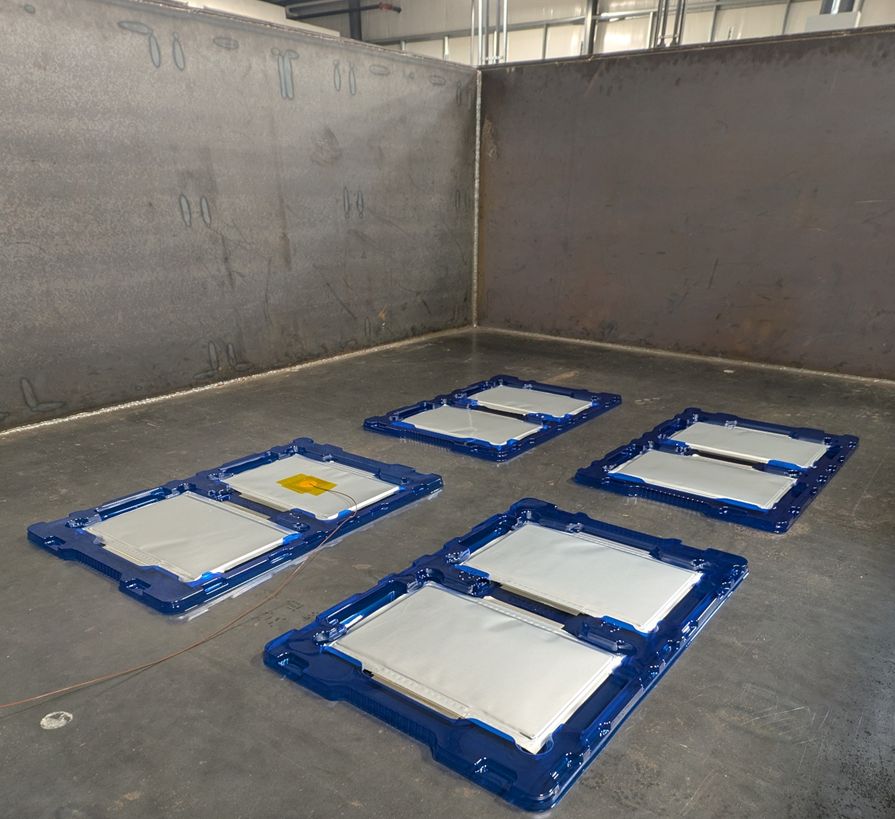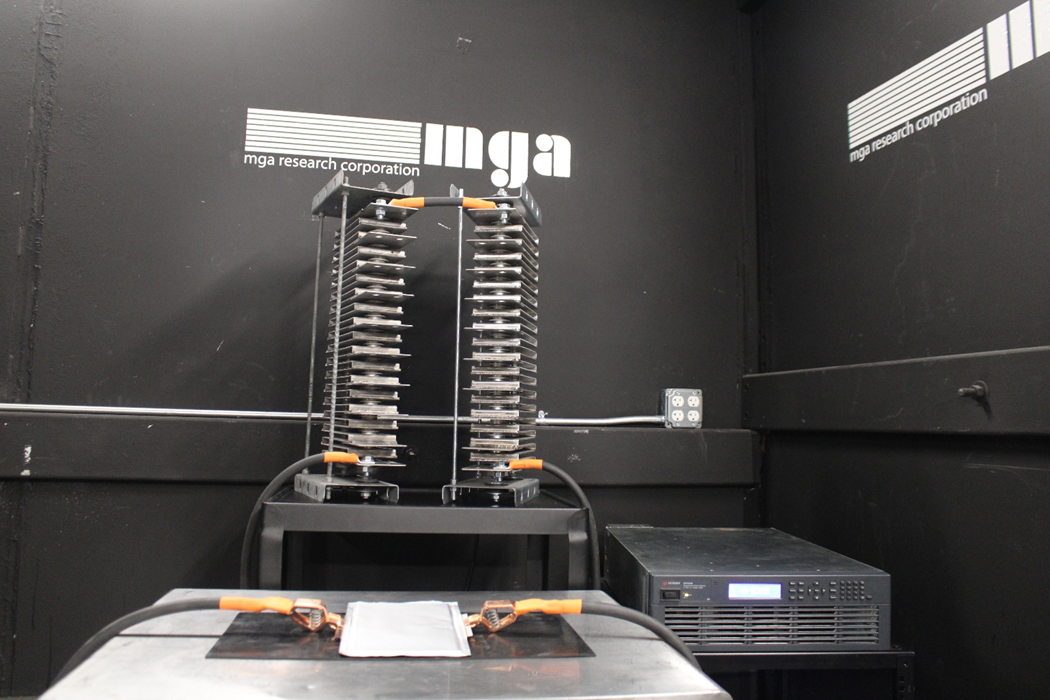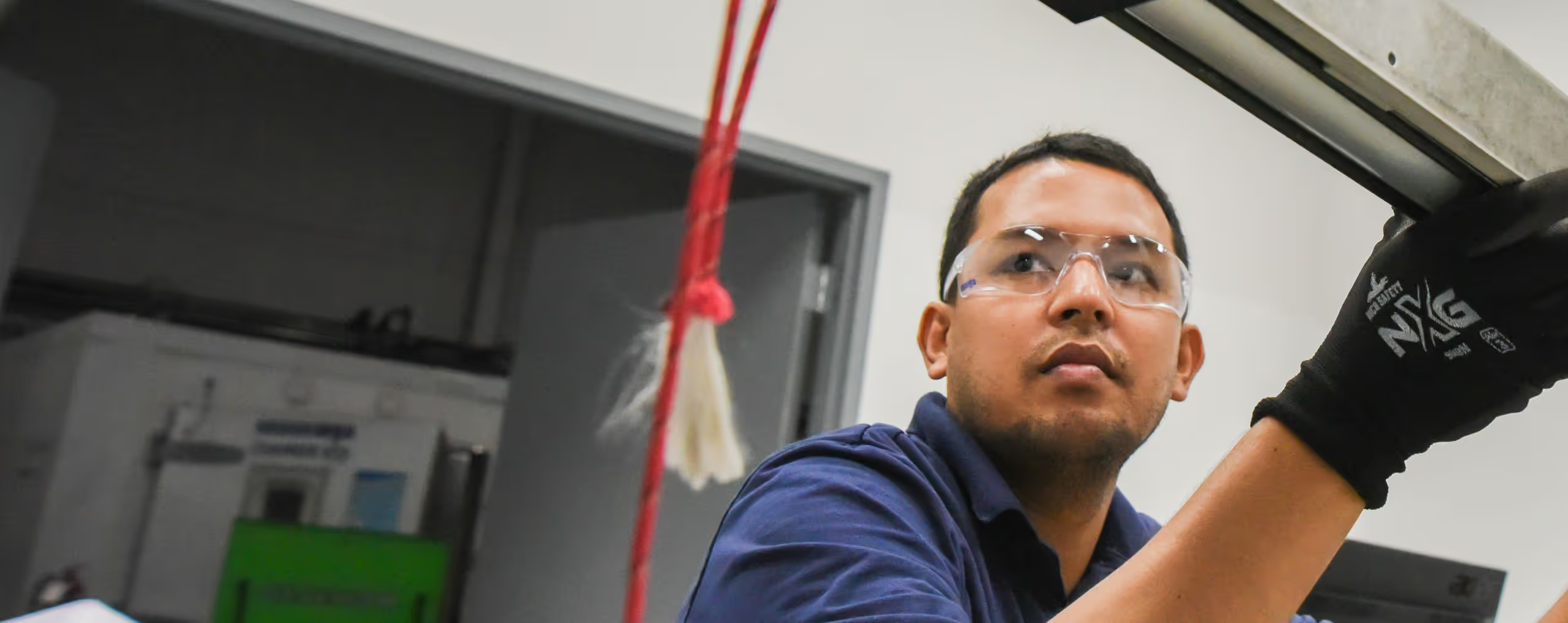Understanding UN 38.3: Ensuring Safe Transportation of Lithium Batteries
Nov 10, 2025

The push for energy transition worldwide has led to a surge in new lithium-ion battery manufacturers, as well as new products in need of high-capacity energy storage – all of which require strict safety regulations. These regulations are wide-ranging, but one of the most common, yet often misunderstood, is UN 38.3 testing.
To put it simply, if you have a product that uses lithium-ion, lithium metal, or sodium-ion batteries, and the plan is to ship internationally, UN 38.3 testing becomes required by international law. This applies to the major forms of transportation: air, sea, rail and road.
One of the more common misconceptions is that UN 38.3 is only enforced for air shipments due to the extreme safety risks present on airplanes in the event of a battery failure resulting in thermal runaway. The reality is that each major agency has adopted the standard and requires compliance with it in order to ship. These agencies are as follows:
- IATA – International Air Transportation Association
- IMO – International Maritime Organization
- ADR – European Agreement Concerning the International Carriage of Dangerous Goods by Road
- US DOT – US Domestic and International Shipments
Since becoming active in 2003, the UN 38.3 standard has included a suite of various tests designed to stress the battery and equipped with safety provisions through real-world scenarios. These tests include vibration, shock-, environmental-, and abusive- (crush, short circuit, etc) based testing, with the main evaluation being signs of venting, fire, electrolyte leakage, and rupture. The more non-destructive tests also have voltage evaluation and temperature monitoring as part of the evaluation.
UN 38.3 Test Series
MGA has a long history of performing UN38.3 testing, with experience in all three battery locations: Akron, New York; Burlington, Wisconsin; and Holly, Michigan. Through specially developed test equipment and years of experience, we provide testing services that allow manufacturers to self-certify their batteries and meet regulations from the cell to pack level. This is achieved through a series of tests, T1 through T8:
T1 – Altitude Simulation
The altitude simulation test is the first test in the UN 38.3 series. This test subjects batteries to a low-pressure environment, like what is experienced on an aircraft cargo hold. The low pressure experienced at high altitude can cause a pressure difference between the inside and outside of battery cells. In addition, the low oxygen levels cause a drop in cooling performance and make thermal runaway more violent. For these reasons, lithium-ion batteries are generally not stored in the cargo hold of passenger aircraft whenever possible.

At MGA Research Corporation, we can accommodate multiple DUTs simultaneously in our altitude simulation chambers. These chambers have been specifically designed to withstand extreme vacuum for testing and extreme pressure in the event of a battery failure. Our largest chamber has dimensions 8’ x 6’ x 3’ . This large size allows for testing multiple samples simultaneously, enabling T1 testing to be completed faster and shortening the overall program time.

T2 - Thermal Shock
The thermal shock test consists of 10 cycles of storage at 72 °C, then 40 °C with a 30-minute changeover time between temperatures. Following thermal shock, a 24-hour monitoring period is observed at ambient temperature. Thermal shock simulates changing temperatures in places such as the lower deck, cargo hold, box truck, or shipping container. The rapid change in temperature causes expansion and contraction of the battery materials and changes in the electrolyte. For this testing, it is critical to meet the 30-minute ramp times. Our facilities have a variety of climatic chambers and sizes to meet thermal shock needs for single or dual chamber testing.
T3 - Vibration
The third test of the UN 38.3 assesses battery durability under simulated transportation conditions. It involves placing the battery on a vibration table that performs a sine sweep from 7Hz to 200Hz and back over 15-minute cycles, repeated 12 times over three hours across three perpendicular axes. This simulates the vibrations experienced in locations such as a truck, plane cargo hold, and ship. We conduct this test using multiple different sizes of vibration tables to accommodate various battery weights and dimensions.

T4 - Mechanical Shock
The shock portion of the UN 38.3 transport test evaluates battery resilience during simulated transportation impacts. The mechanical shocks are akin to experiences such as a plane experiencing turbulence or a vehicle driving over a speed bump.
Using a Half-Sine pulse method, 150G is applied over 6 milliseconds for small cells or 50G over 11 milliseconds for large cells. Each battery undergoes three pulses in all six directions (+/-Z, +/-X, +/-Y), for a total of 18 pulses. This test is conducted using multiple vibration tables along with a drop tower to replicate the required shock conditions.
T5 - Short Circuit
The short circuit test simulates accidental contact with a metal surface or circuit failure inside a device. A short circuit happens when there is unintended continuity between the cathode and anode, causing uncontrolled current flow. Lower resistance between the terminals will result in a higher peak current output and faster event. In this test standard, the requirement is less than 100 mΩ of resistance between the terminals during the short circuit. In addition, the cell or battery is heated to 57 ± 4 °C before testing. These requirements provide a worst-case scenario for the event. At MGA, we have an in-house developed short circuit machine that can handle over 30 kA of test current. To adjust resistance, we use specialized high-current grid resistors. Lastly, high-speed data systems are utilized to capture high-resolution electrical data throughout the event. This combination makes us well-equipped to handle testing a single cell, pyro-fuse, or Battery Management System (BMS).

T6 – Impact / Crush
The impact and crush tests are designed to simulate a packaging failure or mishandling during shipping. These tests are only applicable to cells, and the choice of test depends on the cell's geometry. The impact test is performed on cylindrical cells greater than or equal to 18 mm in diameter while the crush is performed on all other cells.
The impact test uses a 9.1 kg mass to impact the cylindrical cell along its longest axis. The mass drops from 61 cm above the cell. Through the use of an MGA drop tower, these exact parameters can be duplicated.
In the crush test, the cell is crushed between two flat surfaces until the applied force meets 13kN, the cell voltage drops by 100mV, or the cell is deformed by 50% or more of its original thickness. This is performed using our hydraulic crush system.

T7 – Overcharge
The overcharge test simulates a faulty battery charger or circuit that charges a battery above its maximum voltage. While it’s unlikely that a battery would be charged during transport, this test validates that the battery can withstand overcharge conditions for general safety. In this test, the battery is intentionally overcharged to evaluate the system's built-in protection mechanisms. Our team uses a variety of battery cyclers and power supplies to overcharge cells, modules, and battery packs.

T8 - Forced Discharge
The forced discharge test drives current in the reverse direction through a rechargeable battery, causing its voltage to drop below zero (negative voltage), and continues until the battery’s energy is fully depleted.

This simulates an imbalanced cell in a battery pack or circuit failure. All cells are tested at their fully discharged state to increase test severity. We provide forced discharge testing using high-precision equipment, such as the Keysight RP 7935A power supply and specialized power grid resistors.
Test Summary
Once testing has been completed, a lithium battery test summary is created by the manufacturer. The test summary is a required document of standardized information that summarizes the battery specifications and test results. At MGA, we work with our customers to conduct the required T1 – T8 tests in a manner described in the UN 38.3 specification. A test report is provided to the customer to document the results of the tests. As the global demand for energy storage continues to accelerate, ensuring the safe transport of lithium-based batteries has never been more critical. UN 38.3 testing is an essential step in validating product safety, protecting customers, and maintaining compliance across borders.
With decades of experience and purpose-built facilities, MGA Research Corporation provides trusted UN 38.3 testing from cell to pack level, helping manufacturers move their products safely and confidently to markets worldwide.
If you are interested in UN 38.3 testing, please reach out to our team through the contact form on our website. We look forward to working with you!
For more information on our UN 38.3 testing capabilities, visit: https://www.mgaresearch.com/capabilities/battery-testing-un38-3
For more information on other battery testing capabilities, visit: https://www.mgaresearch.com/capabilities/battery-testing-module-pack-and-full-vehicle

Ready to Get Started?
Let's discuss your testing needs and how MGA can help. Our team is ready to provide the expertise and solutions you're looking for.
